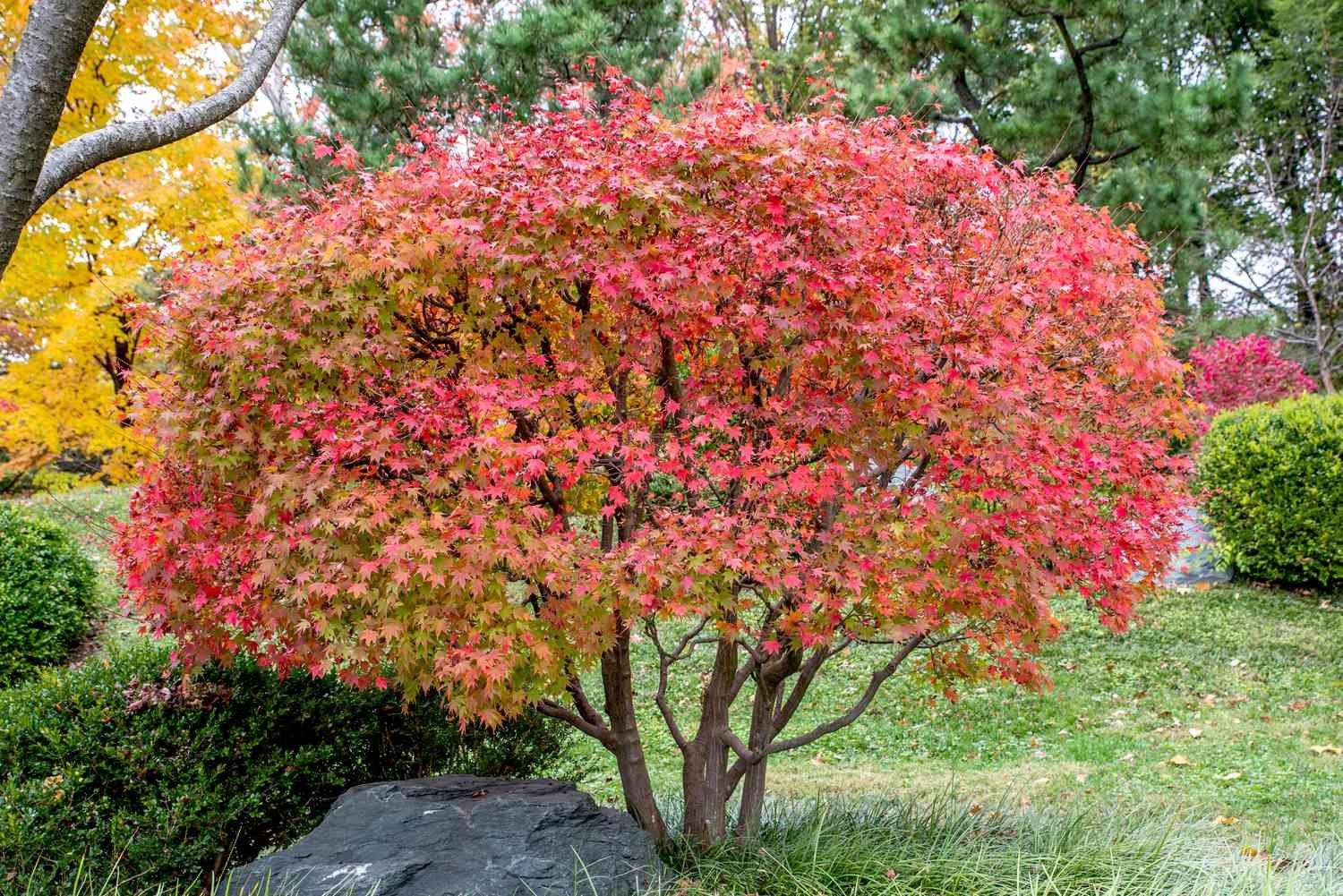Japanese Maple trees are like little pieces of art for your garden. With their stunning colors and unique shapes, they can turn any outdoor space into a serene haven. If you’re thinking about adding one of these beauties to your yard, you’re in for a treat! Here’s a friendly guide to help you pick out the perfect Japanese Maple tree and give it the best start in its new home.
Discover the Magic of Japanese Maples
First things first, let’s talk about what makes Japanese Maples so special. These trees are known for their vibrant foliage, which can range from deep reds to bright greens and purples. They also come in different shapes and sizes, making it easy to find one that fits your garden’s style.
Here are a few varieties you might come across:
- Bloodgood: This one’s a showstopper with its deep red leaves that hold their color all season long.
- Crimson Queen: A weeping variety that drapes gracefully with striking red leaves.
- Shirazz: Features a mix of green, pink, and red in its leaves for a colorful touch.
- Sango Kaku: Known for its coral-red bark and bright green leaves that turn yellow in autumn.
Knowing the different types can help you choose the one that suits your garden best.
Choose the Right Size and Shape
Japanese Maples come in all sorts of sizes and shapes, so think about what works for your garden:
- Space: Make sure you have enough room for the tree to grow to its full size. Some varieties stay small and compact, while others can grow quite large.
- Growth Habit: Decide whether you want a tree with an upright growth or a more cascading, weeping form. This will affect how the tree fits into your garden design.
Think About Soil and Climate
Japanese Maples have a few preferences when it comes to their living conditions:
- Soil: They like well-drained, slightly acidic soil. If your soil is heavy clay or tends to stay dry, you might need to amend it with organic matter to help the tree thrive.
- Climate: Check if the variety you’re interested in will do well in your local climate. Some Japanese Maples are more tolerant of cold or heat, so it’s important to choose one that matches your region’s conditions.
Check the Tree’s Health
When you’re ready to buy your Japanese Maple, here’s what to look for to make sure you’re getting a healthy tree:
- Leaves: The leaves should be vibrant and well-formed. Steer clear of trees with brown edges or spots, as these can be signs of stress or disease.
- Bark: The bark should be smooth and free of cracks or damage. Healthy bark is a good indicator of a strong tree.
- Roots: If you can see the roots, they should be white and firm. Dark or mushy roots are a red flag.
Where to Buy Your Japanese Maple
You have a few options for where to buy your Japanese Maple:
- Local Nurseries: Visiting a local nursery lets you see the tree in person and get advice from knowledgeable staff. Plus, you can often find varieties that are well-suited to your local climate.
- Online Retailers: Many online stores offer a wide range of Japanese Maples. Just make sure to check the descriptions and reviews to ensure you’re buying from a reputable seller.
- Specialty Growers: For rare or specific varieties, consider checking out specialty growers who focus on Japanese Maples. They often have unique selections and can provide expert advice.
Give Your Tree a Great Start
Once you’ve brought your Japanese Maple home, it’s time to plant it and help it settle into its new space:
- Planting: Dig a hole that’s about twice as wide as the root ball but not deeper. This gives the roots plenty of room to spread out. Mix
some organic matter into the soil to improve its quality, and place the tree in the hole so that the top of the root ball is level with the soil surface.
- Watering: Japanese Maples prefer consistently moist soil, but they don’t like to be waterlogged. Water the tree well after planting and keep the soil moist throughout the growing season. During hot, dry spells, you might need to water more frequently.
- Mulching: Add a layer of mulch around the base of the tree. This helps retain moisture, keeps the soil temperature consistent, and reduces competition from weeds. Just be sure to keep the mulch away from the tree’s trunk to prevent rot.
- Pruning: Light pruning can help shape the tree and remove any dead or damaged branches. Be gentle with pruning, as heavy pruning can stress the tree. Aim to prune during the dormant season to minimize impact on the tree’s growth.
Enjoying Your Japanese Maple
With the right care, your Japanese Maple will become a beautiful focal point in your garden. Watch as it changes with the seasons, from vibrant spring leaves to stunning autumn colors. Whether you’re sipping tea on a quiet afternoon or hosting a garden party, your Japanese Maple will add a touch of elegance and tranquility to your outdoor space.
In conclusion, buying and planting a Japanese Maple tree is a delightful way to enhance your garden. By understanding the different varieties, considering the tree’s size and needs, and ensuring you buy from a reputable source, you can find the perfect tree for your space. Take the time to plant it properly and give it the care it needs, and you’ll enjoy its beauty for years to come.



